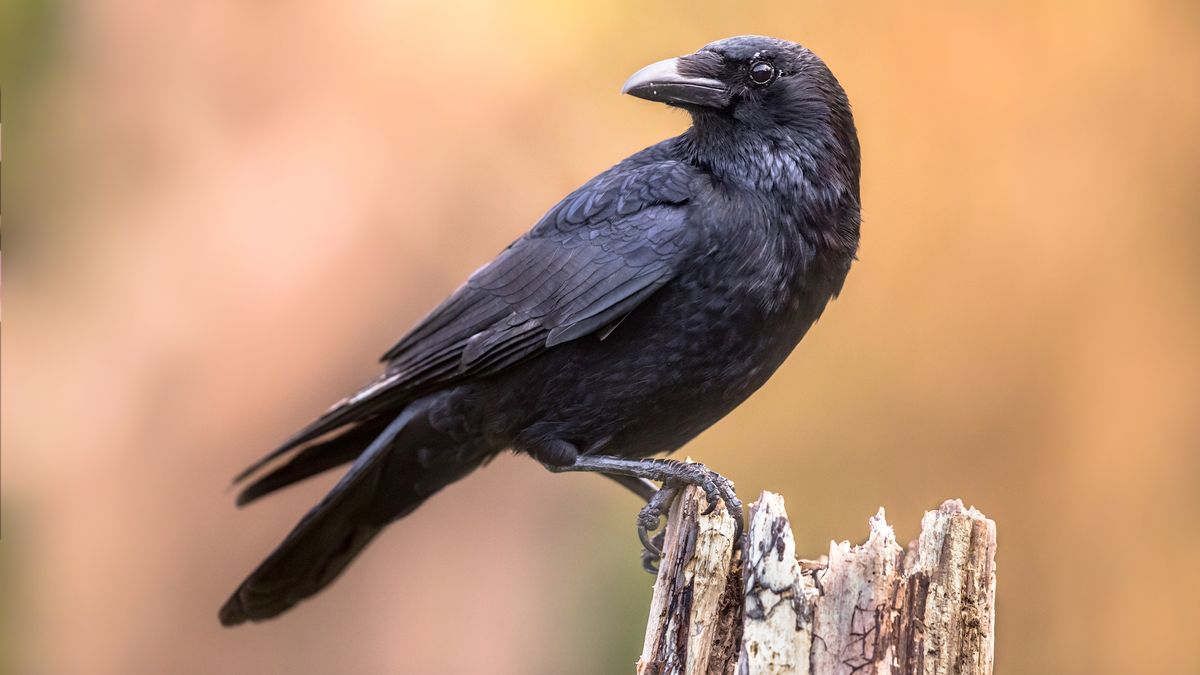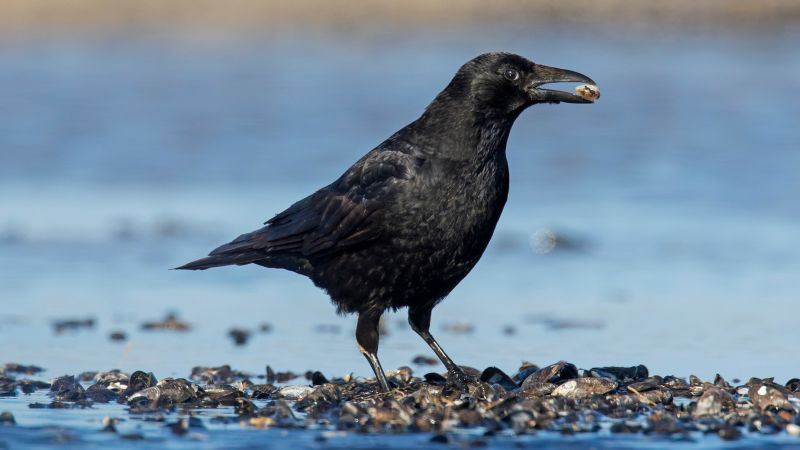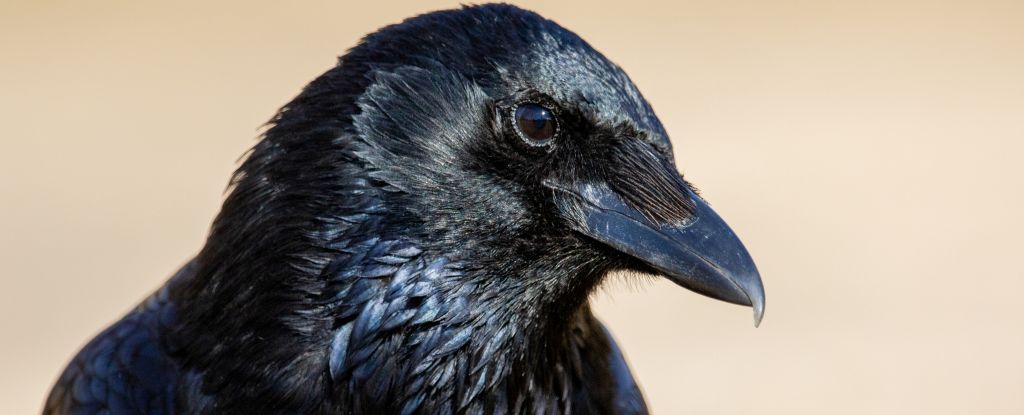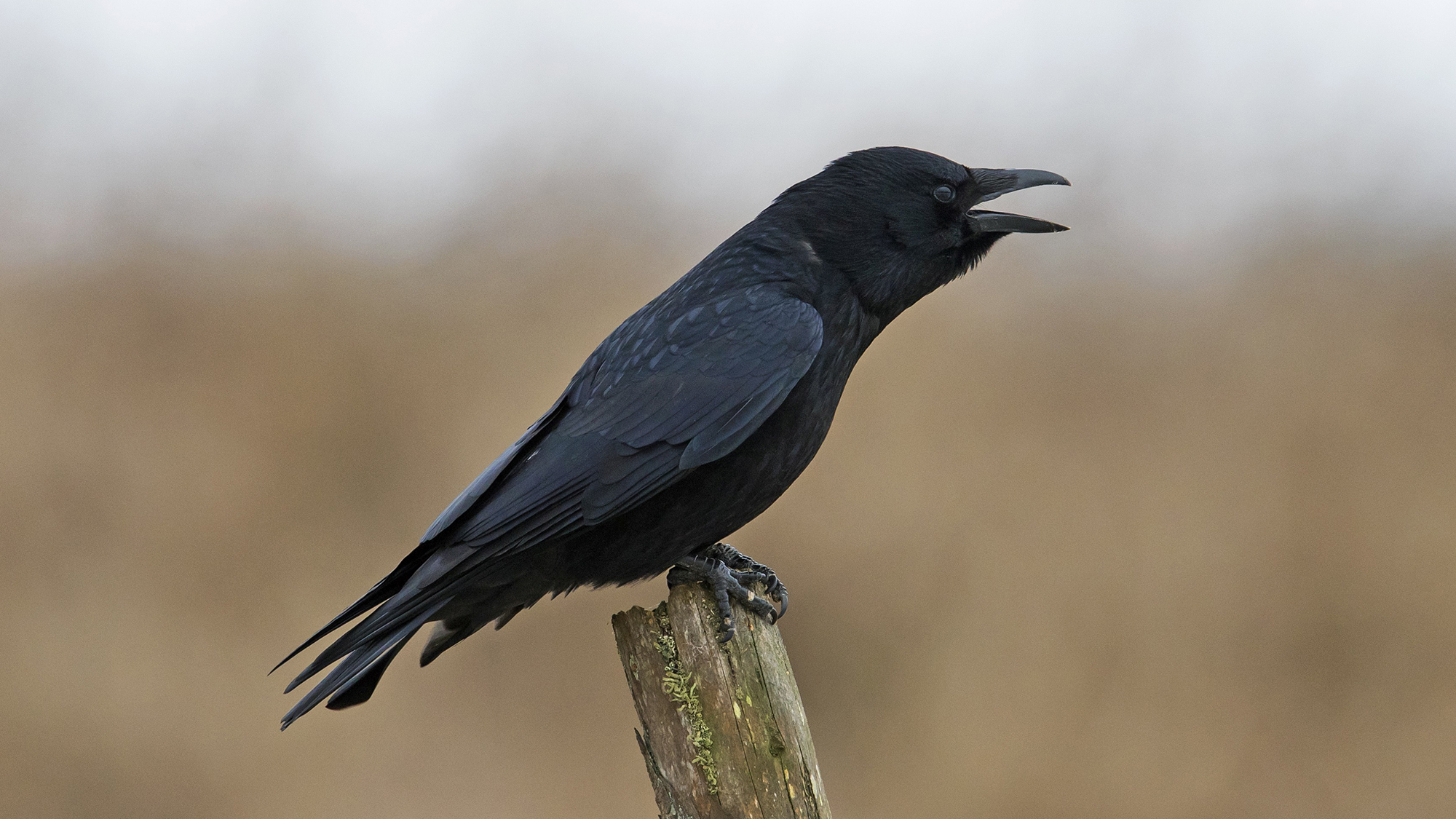Carrion crows can vocally count up to four, a new study reveals the abilities comparable to those of young children. This discovery is conducted by researchers at the University of Tübingen’s animal physiology lab in Germany. This suggests that crows might share numeracy skills akin to those of human toddlers.

Also Read: Gliese 12 b: NASA Discovers Earth-Size Exoplanet
Researchers have conclusively showed that carrion crows (Corvus corone) can produce a specific number of caws in response to visual or auditory stimuli.
This is the first time animals have been observed performing the feat of counting out loud with deliberate and precise vocalizations.
Published in the journal Science on May 23, the study highlights the crows’ ability to count out loud from one to four.
The researchers, “Producing a specific number of vocalizations with purpose requires a sophisticated combination of numerical abilities and vocal control.”
Three Corvus corone were presented with randomly ordered visual and auditory stimuli. The visual stimuli consisted of Arabic numbers while the auditory stimuli were different instrumental sounds. Through trial and error, the crows learned to associate each cue with a set number of caws.
The Corvus corone were trained to caw the correct number of times corresponding to the prompts and then peck a screen to signal they had finished. They were rewarded with a treat for accurate responses which incentivized precise counting.
The Corvus corone performed well producing the correct number of caws at a rate higher than chance. When errors occurred they were usually between numbers that were close together such as three and four.
Like toddlers the crows use vocalizations corresponding to quantities before grasping symbolic numbers. Researchers suggest this competency in crows could represent a precursor to true counting, where numbers are part of a combinatorial symbol system.
Previous studies have shown that various animals including honeybees, lions, frogs, and ants, have a numerical sense.
Black-capped chickadees (Poecile atricapillus) were known to add more “dee” trills at the end of their calls to signify more threats.
Corvus corone were selected for this study due to their excellent vocal abilities and demonstrated understanding of complex mathematical concepts including the notion of zero.
Corvus corone often store food in multiple caches. Counting helps them remember the number of items stored in each location.
During mating season counting the number of calls or displays can help evaluate mates. Territorial defense also benefits from counting the number of rivals.
Staying in larger groups for safety from predators requires counting the number of fellow birds. Keeping track of the number of eggs or chicks ensures all offspring receive adequate care.
The timing and acoustic features of the crows’ initial vocalization predicted the number of caws indicating a counting process. This intentionality in their calls had not been previously observed in non-human animals.
Corvus corone were found to not only count but also match the number of calls they made when shown a numeral.
Led by neurobiologist Diana Liao, the study involved training three carrion crows over more than 160 sessions.
The crows learned to associate a series of visual and auditory cues from 1 to 4 with corresponding numbers of vocalizations. When shown the numeral 3 they were expected to make three caws within 10 seconds.
The crows showed an understanding of abstract numbers and planned the number of caws before vocalizing. This planning was evident as the reaction times increased with higher numbers of vocalizations.
Also Read: Koleken Inakayali: New Dinosaur Species with Tiny Arms Discovered in Patagonia
The mistakes made by the crows such as cawing one too many times or stuttering were similar to the errors made by human toddlers learning to count. These errors provided insights into the processes underlying the birds’ counting abilities.
The study challenges the notion that animals are stimulus-response machines, a theory popularized by 20th-century behaviorist B.F. Skinner.
The findings suggest that Corvus corone are capable of thinking ahead and communicating in a structured preplanned manner.
Counting is not unique to crows. Chimpanzees have been taught to count in numerical order and understand the value of numerals.
Male frogs count the calls of competing males to match or exceed them when wooing females. Ants are theorized to count their steps to retrace their paths to their colonies.
The study hints at a previously unknown channel for avian communication. Chickadees, for example produce more “dee” sounds in their calls for smaller more agile predators.
Crow intelligence has been documented over decades. New Caledonian crows are known to create compound tools for accessing food.
A 2013 study co-authored by Andreas Nieder of the University of Tübingen highlighted crows’ ability to establish rules.
Nicholas Thompson’s 1968 Research, hypothesized that crows could count based on the duration and number of their caws. His research suggested that the crows’ counting abilities exceeded the demands of survival.
2015 University of Tübingen Study trained crows to recognize groupings of dots, recording neuronal activity in the part of the brain that processes visual stimuli. The crows’ neurons ignored the dots’ size, shape, and arrangement, focusing solely on the number.
Heather Williams, Williams College addressed that humans do not have a monopoly on skills such as numerical thinking, abstraction, and planning ahead.
The findings on crow intelligence should not be surprising given the documented capabilities of these birds.
Kevin McGowan, Cornell Lab of Ornithology highlighted that the study demonstrated crows’ ability to think ahead and communicate in a structured way which is a precursor for having a language.
The Corvus corone were trained to associate visual cues (such as bright blue numerals) and auditory cues (like a half-second drumroll) with specific numbers of caws.
They were required to peck an “enter” key on a touchscreen after completing the correct number of vocalizations to receive a treat.
As the crows progressed their reaction times increased with the number of caws they needed to make. Researchers could predict the number of calls based on subtle acoustic differences in the first call.
The study’s findings suggest that the ability to count may have ancient roots predating language and symbolic systems.
Understanding how crows and other animals use counting in their daily lives could have practical applications in fields such as animal behavior, conservation, and even robotics and AI.
Also Read: SpaceX Launches First Batch of Next-Generation Spy Satellites for NRO





